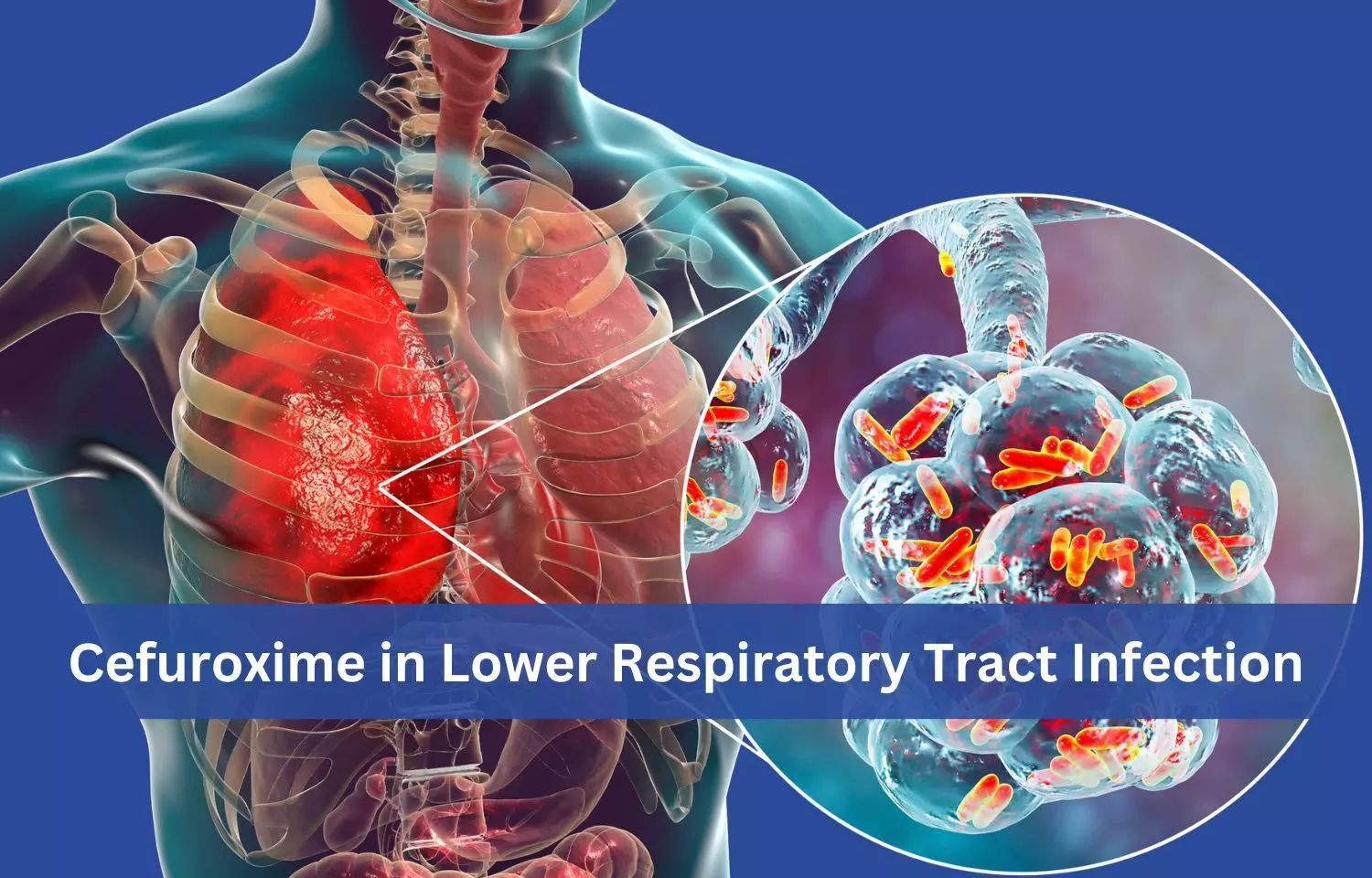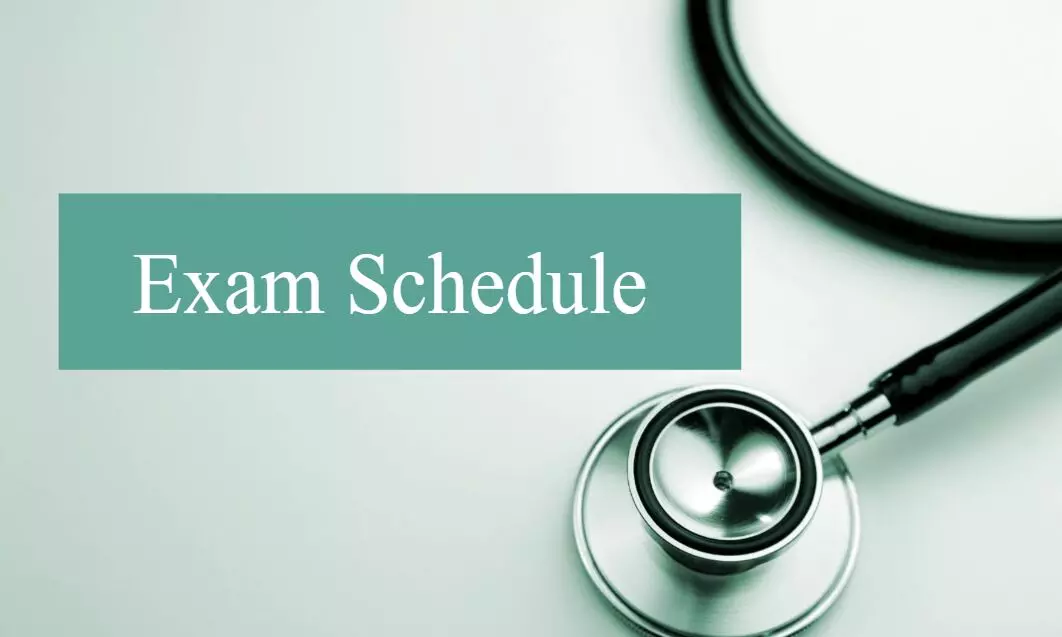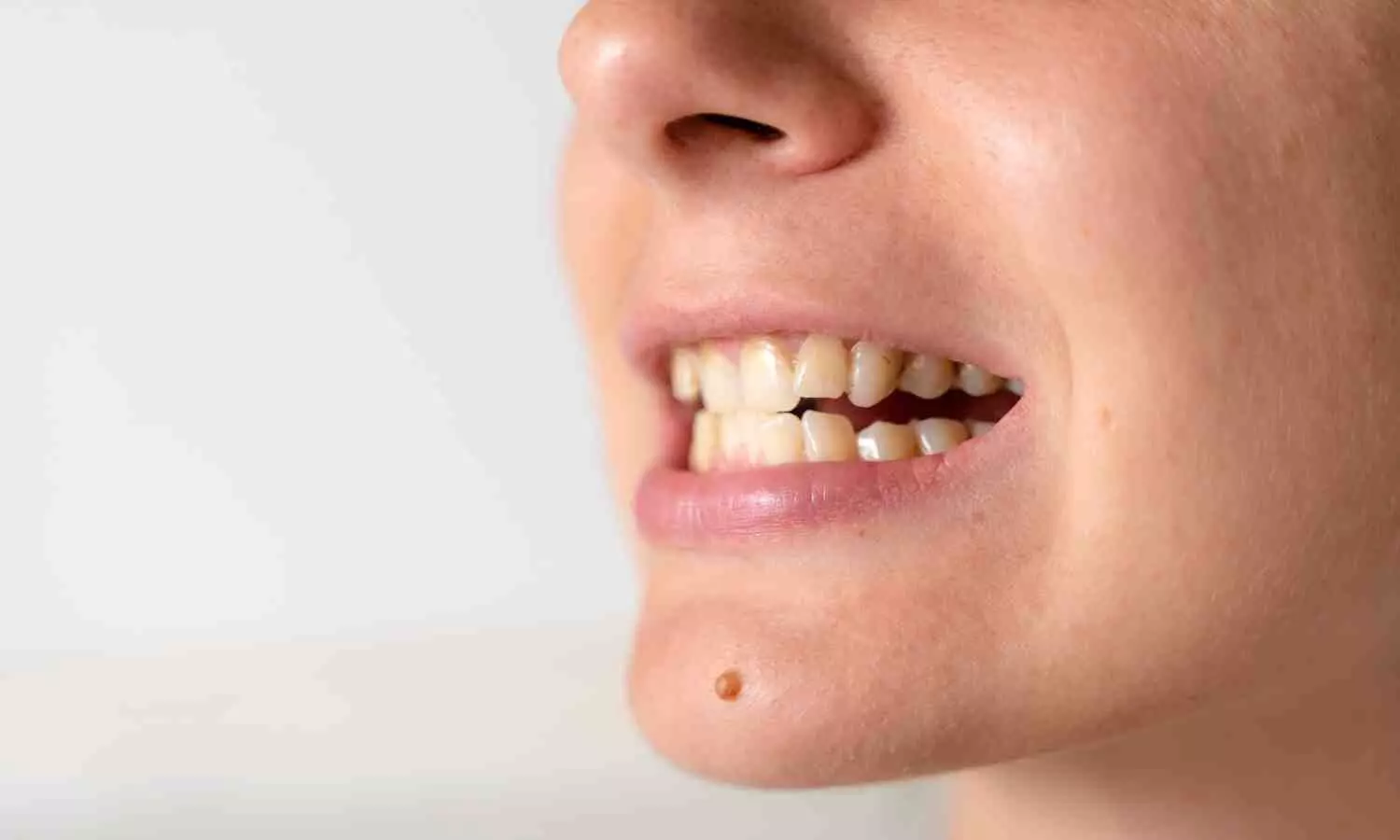Lower respiratory tract infections (LRTIs) are a major public health concern, causing considerable illness and death in all age groups. (1). The World Health Organization identified LRTIs as the fourth leading cause of death in communicable diseases (2) and the second leading cause of disability globally, causing approximately 2.74 million deaths annually (3).
In India, LRTIs contribute significantly to disease burdens, with a 7-fold disparity in disability-adjusted life years (DALY) rate (4). Few studies reported the rates of clinically defined LRTIs and hospitalizations associated with LRTIs to be 248.3 and 12.7 per 1000 person-years, respectively in India (5).
Navigating the Spectrum of Lower Respiratory Tract Infections:
The European Respiratory Society (ERS) along with The European Society for Clinical Microbiology and Infectious Diseases (ESCMID) defined LRTIs as “An acute illness (present for 21 days or less), usually with cough as the main symptom, with at least one other lower respiratory tract symptom (sputum production, dyspnea, wheeze or chest discomfort/pain) and no alternative explanation (e.g. sinusitis or asthma) (6).” LRTIs is a broader term comprising acute bronchitis, pneumonia, and exacerbations of chronic lung disease and there is a huge overlap of clinical presentations of various infections of LRT. Indian statistics revealed that advanced age, being male, having chronic bronchitis, experiencing co-morbidities, smoking, belonging to the lower quintile of wealth, and using solid fuel in the household were some of the identified risk factors for LRTIs (5).
Management of LRTI: Overview
Antibiotics are specifically advised for chronic obstructive pulmonary disease (COPD) exacerbations with increased dyspnea, sputum volume, and purulence. The empirical use of antiviral treatment for suspected influenza is generally discouraged. In primary care setting, cough suppressants, expectorants, mucolytics, antihistamines, inhaled corticosteroids, and bronchodilators are refrained for acute LRTI. Antibiotic treatment is recommended for confirmed or suspected pneumonia, and consideration should be given to patients with LRTI and serious co-morbidities such as exacerbations of COPD, cardiac failure, insulin-dependent diabetes, or neurological disorders (6).
Examining the Significance of Cefuroxime in LRTIs (7):
Healthcare providers administer a range of antibiotics to address LRTIs, with Cefuroxime, a second-generation cephalosporin, standing out. It undergoes rapid hydrolysis, forming the active parent compound, rendering it a noteworthy option.
- Cefuroxime exhibits a wide range of antibacterial activity in vitro, encompassing methicillin-sensitive staphylococci (MRSA) and other common respiratory pathogens like Streptococcus pneumoniae, Haemophilus influenzae, Moraxella (Branhamella) catarrhalis and group A β-hemolytic streptococci. It also has broad-spectrum activity against the β -lactamase-positive respiratory pathogens H. influenzae and M. catarrhalis; and is also active against penicillin-susceptible and -intermediate strains of S. pneumonia.
- The Clinical and Laboratory Standards Institute (CLSI) has put forth various breakpoints for cefuroxime as follows (7):
|
MIC Breakpoints
|
|
S. pneumonia
|
≤0.5 mg/L
|
Susceptible
|
|
1mg/L
|
Intermediate susceptibility
|
|
≥2mg/L
|
resistant
|
|
Haemophilus influenzae and H. parainfluenza
|
≤ 4
|
Susceptible
|
|
8
|
Intermediate susceptibility
|
|
≥ 16
|
resistant
|
The comparative MIC90 values, kill time kinetics, Cmax & Tmax have been elaborated as follows (8):
a. MIC90 values compared to other antibiotics:
|
Pathogen
|
Cefuroxime
|
Cefaclor
|
Amox-Clav
|
|
Streptococcus pneumoniae Penicillin Susceptible
|
<0.012
|
1
|
≤0.06
|
|
Streptococcus pyogenes
|
≤0.25
|
≤1
|
NA
|
|
Β-lactamase positive Haemophilus influenza
|
1-2
|
32-64
|
2-4
|
This indicates a better in-vitro antibacterial activity of cefuroxime against various pathogens compared to cefaclor and amoxicillin/clavulanic acid.
b. Kill Time Kinetics (7)
|
|
S.aureus & H.influenza
|
Faster lysis (onset of lysis- 1 hr)
|
MIC – 0.5 mg/L
|
|
P. mirabilis, and E. coli
|
Slower lysis (onset of lysis- 1to 5 hrs)
|
MIC – 2.0 and 4.0 mg/L, respectively
|
In the context of the clinical setting, these results suggest that cefuroxime prevents the dissemination of S Aureus and H. influenza in the bloodstream.
c. Cmax and tmax of cefuroxime at different concentrations (7):
|
Dosage
|
Cmax (mg/L)
|
Tmax (h)
|
|
Single dose 125mg
|
2.1
|
2.2
|
|
Single dose 250mg
|
4.1-4.8
|
2.1-2.5
|
|
Single dose 500mg
|
4.4-7.9
|
2.4-3.0
|
|
Single dose 100mg
|
13.6
|
2.2
|
|
Multiple doses 250 mg every 12 h
|
4.01
|
2.77
|
|
LRTIs 500mg every 12h for 5 days
|
9.1
|
2.75
|
The pharmacokinetic profile of cefuroxime (administered immediately after a meal) is linear over the 125 to 1000mg dose range.
d. Clinical Response Rates: For treating LRTIs like acute bronchitis, acute exacerbations of chronic bronchitis, or community-acquired pneumonia, cefuroxime (given at 250 or 500mg twice daily for 5 to 10 days) exhibited efficacy, achieving clinical responses (cure or improvement) in over 72% of patients (7).
- The U.S. Food and Drug Administration has put forth the dosage recommendations of Cefuroxime Axetil tablet for various infections (10)
|
Adults and Adolescents (13years and older)
|
Dosage
|
|
Acute bacterial exacerbations of chronic bronchitis (mild to moderate)
|
250 or 500 mg PO every 12 hours for 10 days
|
|
Secondary bacterial infections of acute bronchitis
|
250 or 500 mg PO every 12 hours for 5-10 days
|
Comprehensive Review of Literature on Clinical Efficacy of Cefuroxime:
- Cefuroxime in Lower Respiratory Infections: In a multinational, non-blinded trial involving 512 hospitalized patients with LRTIs, the clinical and bacteriological effectiveness of intravenous cefuroxime (750 mg thrice a day) followed by oral cefuroxime (500 mg twice a day) was compared to intravenous amox-clav (1.2g thrice a day) followed by oral amox-clav (625 mg thrice a day). After 48 to 72 hours of parenteral therapy, both groups having 256 patients each, underwent five days of oral treatment. The results showed 87.1% and 72.8% in the cefuroxime group, and 85.9% and 70% in the amoxiclav group achieved clinical improvement and bacterial clearance, respectively. This suggests that the “follow-on” therapy with Cefuroxime/cefuroxime axetil is as clinically and bacteriologically effective as amox-clav, with the added convenience of twice-daily oral administration (11).
- Cefuroxime – Efficacious and Safe: A multicenter, randomized clinical trial compared the clinical and bacteriologic efficacies and the safety of cefuroxime axetil with amoxicillin-clavulanate in treating secondary bacterial infections of acute bronchitis. The study enrolled 537 patients who received either 5 days or 10 days of cefuroxime axetil (250 mg twice daily) or 10 days of treatment with amoxicillin-clavulanate at 500 mg three times daily. Upon evaluation of clinical outcome, cure (complete resolution of clinical signs and symptoms of infection at the 1- to 3-day and 13- to 15-day posttreatment visits), or improvement (clinical signs and symptoms substantially reduced but not entirely resolved),) treatment with cefuroxime axetil for 5 days achieved 82%, cefuroxime axetil for 10 days gained 86%, and 83% with amoxicillin-clavulanate, respectively. A higher incidence of drug-related adverse events was observed with amoxicillin-clavulanate treatment (P=0.001). These results indicate that treatment with cefuroxime axetil is effective and safe in patients with acute bronchitis. (12)
- Cefuroxime in Treatment of Severe LRTIs: In a double-blind, randomised trial, cefuroxime and ampicillin were assessed for treating severe LRTIs. Cefuroxime, administered at 750 mg to 57 patients, and ampicillin, at 500 mg to 54 patients, were delivered via intramuscular injection thrice daily for 7-10 days. The study population exhibited acute exacerbations of chronic bronchitis with or without pneumonia, with a subset presenting bronchiectasis and nearly a quarter having an underlying bronchial carcinoma. By the end of the treatment, sputum, which was initially consistently mucopurulent, transitioned to mucoid in 87.7% of cefuroxime-treated patients versus 48.1% of ampicillin-treated patients, and a satisfactory clinical response was noted in 94.7% and 68.5%, respectively, with both differences proving statistically significant. Thus, the study showed that cefuroxime was more efficacious than ampicillin for LRTIs (13).
- The bacterial eradication and clinical efficacy of cefuroxime compared to other antibiotics have been represented in a tabular form as given below (7,8)
|
Study design
|
Infection
|
Cefuroxime (n){dose}
|
Comparator (n){dose}
|
Clinical response rate (complete resolution) *cefuroxime/comparator
|
Bacteriological response rate (complete resolution) *cefuroxime/comparator
|
|
Multicentre, non-blind
|
Acute bronchitis and acute exacerbations of chronic bronchitis
|
Cefuroxime (98) {250 mg twice a day}
|
cefprozil (97) {250mg twice a day}
|
94/91
|
82/79
|
|
Multicenter
|
Community-acquired pneumonia
|
Cefuroxime (69){10mg/kg mg twice a day}
|
Ceftibuten{10mg/kg twice a day}
|
93/80
|
32 /36
|
*Expressed in % of patients
Cefuroxime continues to hold an important place in the management of community infections in Indian real-life setting: The Indian review revisiting scientific evidences on the efficacy and safety of Cefuroxime axetil concluded that cefuroxime can be a proper empiric choice antibiotic for Indian physicians treating respiratory tract infections, urinary tract infections, and skin and soft tissue infections in their outpatient departments. Also, in an era of rapidly increasing bacterial resistance, empirical treatment with cefuroxime axetil may ensure the proper use of newer antibacterial medications, minimising bacterial resistance. (14,15)
Consideration of Cefuroxime: Glance at Guidelines
- The Infectious Diseases Society of America/American Thoracic Society Consensus Guidelines for Adult Community-Acquired Pneumonia Management endorse cefuroxime (500 mg twice daily) for outpatient treatment in individuals with comorbidities, including chronic heart, lung, liver, or renal diseases; diabetes mellitus; alcoholism; malignancies; asplenia; immunosuppressive conditions or drug use; and recent antimicrobial use within the past 3 months (16).
- Cefuroxime is endorsed by the Indian Council of Medical Research (ICMR) for outpatient treatment for adult community-acquired pneumonia (CAP), both for individuals without comorbidities and those with comorbidities or recent antibiotic use within three months. The recommended dosage of Cefuroxime is 500 mg twice daily orally or 1.5 gm twice daily IV in adults. (17)
Take Home Messages
- LRTIs are a substantial health concern in India, carrying a significant 7-fold difference in DALY rate with clinically defined LRTI and associated hospitalization rates at 248.3 and 12.7 per 1000 person-years, respectively.
- LRTIs include acute bronchitis, pneumonia, and exacerbations of chronic lung diseases like COPD and Acute Exacerbation of Chronic Bronchitis, with antibiotics playing a major role in their management.
- Cefuroxime is a second-generation cephalosporin with a wide antibacterial spectrum and is a safe, clinically and bacteriologically effective antibiotic.
- Cefuroxime (500 mg twice daily) is recommended by both the Infectious Diseases Society of America/American Thoracic Society Consensus Guidelines and the Indian Council of Medical Research (ICMR) for outpatient treatment of adult community-acquired pneumonia.
- Cefuroxime axetil could be considered a suitable empirical treatment for various community-acquired infections, particularly those caused by beta-lactamase-producing strains of common respiratory pathogens.
- In a time marked by swiftly evolving bacterial resistance, initiating empirical therapy with antibacterial agents like cefuroxime axetil may help in averting the development of resistance to newer antibacterial agents. This approach aims to ensure the judicious use of these advanced drugs and potentially forestall the emergence of bacterial resistance to them.
References:
1. GBD 2015 LRI Collaborators. Estimates of the global, regional, and national morbidity, mortality, and aetiologies of lower respiratory tract infections in 195 countries: a systematic analysis for the Global Burden of Disease Study 2015. Lancet Infect Dis. 2017;17(11):1133-1161. doi:10.1016/S1473-3099(17)30396-1
2. A visualized overview of global and regional trends in the leading causes of death and disability 2000-2019. www.who.int. https://www.who.int/data/stories/leading-causes-of-death-and-disability-2000-2019-a-visual-summary
3. Feldman C, Shaddock E. Epidemiology of lower respiratory tract infections in adults. Expert Rev Respir Med. 2019;13(1):63-77. doi:10.1080/17476348.2019.1555040
4. Council I, India, Washington. O. India: Health of the Nation’s States: The India State-Level Disease Burden Initiative: Disease Burden Trends in the States of India, 1990 to 2016. Indian Council Of Medical Research; 2017
5. Kumar R, Dar L, Amarchand R, et al. Incidence, risk factors, and viral etiology of community-acquired acute lower respiratory tract infection among older adults in rural north India. J Glob Health. 2021;11:04027. Published 2021 Apr 3. doi:10.7189/jogh.11.04027
6. Woodhead M, Blasi F, Ewig S, et al. Guidelines for the management of adult lower respiratory tract infections–full version. Clin Microbiol Infect. 2011;17 Suppl 6(Suppl 6):E1-E59. doi:10.1111/j.1469-0691.2011.03672.x
7. Perry CM, Brogden RN. Cefuroxime axetil. A review of its antibacterial activity, pharmacokinetic properties, and therapeutic efficacy. Drugs. 1996;52(1):125-158. doi:10.2165/00003495-199652010-00009.
8. Scott LJ, Ormrod D, Goa KL. Cefuroxime axetil: an updated review of its use in the management of bacterial infections. Drugs. 2001;61(10):1455-1500. doi:10.2165/00003495-200161100-00008.
9. Gautam Y. A review: antimicrobial activity of cefuroxime axetil. W. Jour. Pharm. Res. 2023;12(11):579-588. Doi:10.20959/wjpr202311-28847.
10. https://www.accessdata.fda.gov/drugsatfda_docs/label/2015/050605s048,050672s034lbl.pdf
11. Brambilla, C., Kastanakis, S., Knight, S. et al. Cefuroxime and cefuroxime axetil versus amoxicillin plus clavulanic acid in the treatment of lower respiratory tract infections. Eur. J. Clin. Microbiol. Infect. Dis. 11, 118–124 (1992). https://doi.org/10.1007/BF01967062.
12. Henry D, Ruoff GE, Rhudy J, Puopolo A, Drehobl M, Schoenberger J, Giguere G, Collins JJ. Effectiveness of short-course therapy (5 days) with cefuroxime axetil in treatment of secondary bacterial infections of acute bronchitis. Antimicrob Agents Chemother. 1995 Nov;39(11):2528-34. doi: 10.1128/AAC.39.11.2528.
13. Pines A, Raafat H, Khorasani M, Mullinger BM. Cefuroxime and ampicillin were compared in a double-blind study in the treatment of lower respiratory tract infections. Chemotherapy. 1981;27(6):459-465. doi:10.1159/000238016.
14. Badhwar VR, Ganapathy S, Prabhudesai PP, Tulara NK, Varaiya AY, Vyas D. A Relook of Cefuroxime in Community Infections: An Option Still Beneficial. J Assoc Physicians India. 2016 Jul;64(7):95-101.
15. Kumar S, Jeet K, Devi A, Kumar P, Kumar N. A Short Review on Cefueoxime Axetil Tablet. Asian J Pharm Res Dev [Internet]. 2022 Aug. 14 [cited 2024 Feb. 14];10(4):pdf. Available from: https://www.ajprd.com/index.php/journal/article/view/1148
16. Mandell LA, Wunderink RG, Anzueto A, et al. Infectious Diseases Society of America/American Thoracic Society consensus guidelines on the management of community-acquired pneumonia in adults. Clin Infect Dis. 2007;44 Suppl 2(Suppl 2): S27-S72. doi:10.1086/511159
17. Indian Council on Medical Research. Treatment Guidelines for Antimicrobial Use in Common Syndrome 2022. Accessed on 22nd January 2024 from https://main.icmr.nic.in/content/guidelines-0 or https://play.google.com/store/apps/details?id=com.icmr.amr_treatment_guidelines&hl=en&gl=US













